Home - Travel Destinations - Top Things to Do in Trogir: Croatia’s UNESCO Island Town
If you click on links we provide, we may receive compensation.
Trogir, a tiny island town with Venetian architecture, medieval walls, and a cathedral that’s a masterpiece of Dalmatian art, stole my heart. Trogir’s scale, charm, and cultural depth create a sense of intimacy and wonder that’s hard to fake. It’s the kind of place where history whispers through stone alleyways and sunsets bounce off centuries-old facades.

A UNESCO World Heritage Site
Trogir is a remarkable example of where the bones of a 2,300-year-old city (Trogir’s old town) still shape modern life. This Croatian island’s design dates back to the Hellenistic period (around the 3rd century BC). Greek settlers founded the city and were instrumental in Trogir’s orthogonal street plan.
Trogir is a UNESCO World Heritage Site precisely because of its Venetian-influenced architecture, medieval fortifications, and the Cathedral of St. Lawrence—a layered masterpiece built over centuries in Romanesque, Gothic, and Renaissance styles.
A stroll through Trogir’s cobblestone alleys, laid out in a grid-like pattern, is jaw-droppingly beautiful. The town’s layout still reflects its Hellenistic and Roman roots, with medieval walls and fortresses like Kamerlengo preserving its defensive past. Its streets intersect at right angles and are adorned with beautiful Romanesque churches and magnificent Renaissance and Baroque buildings from the Venetian period.
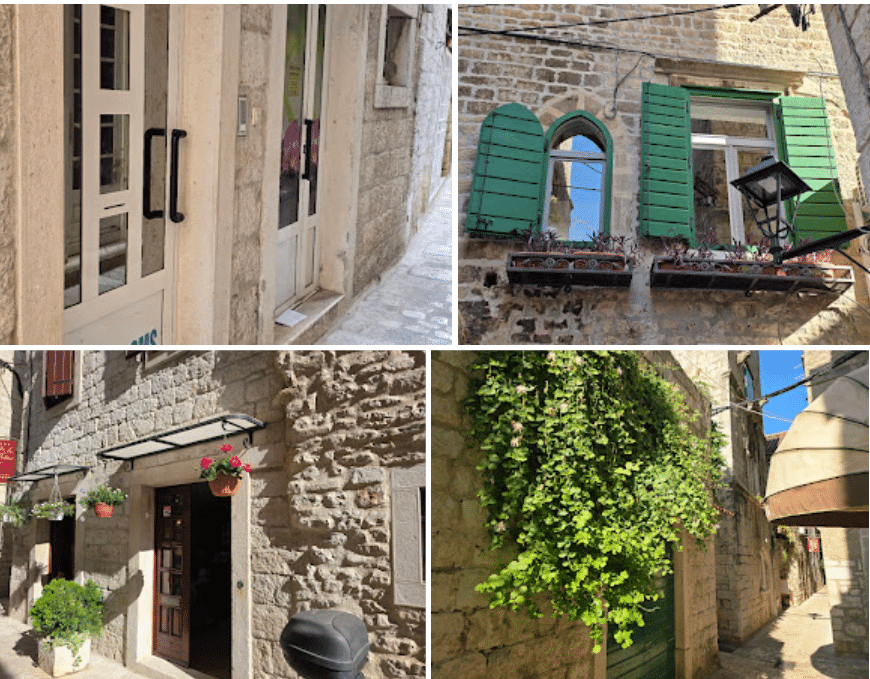
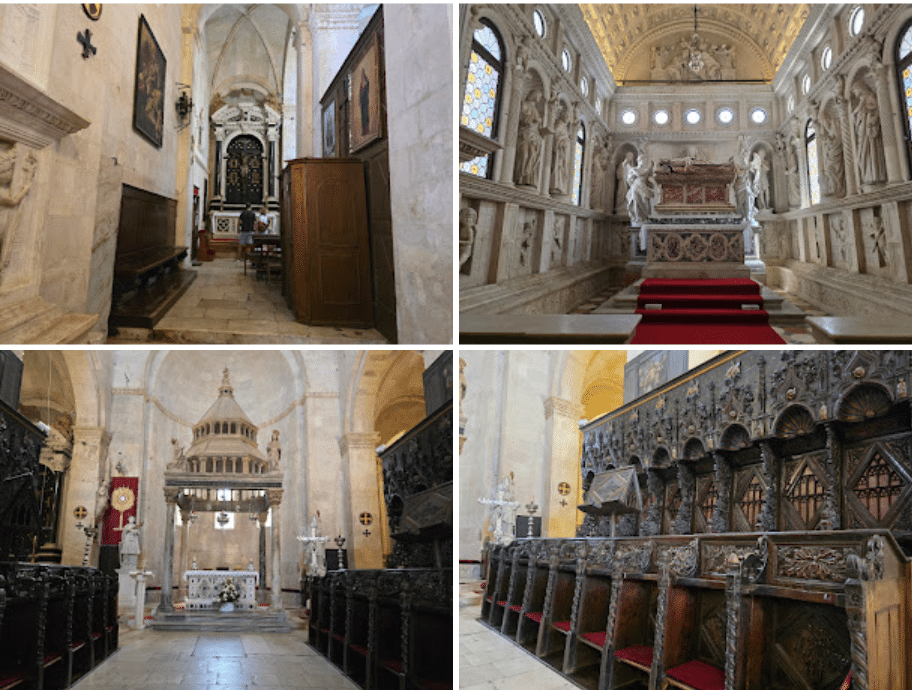
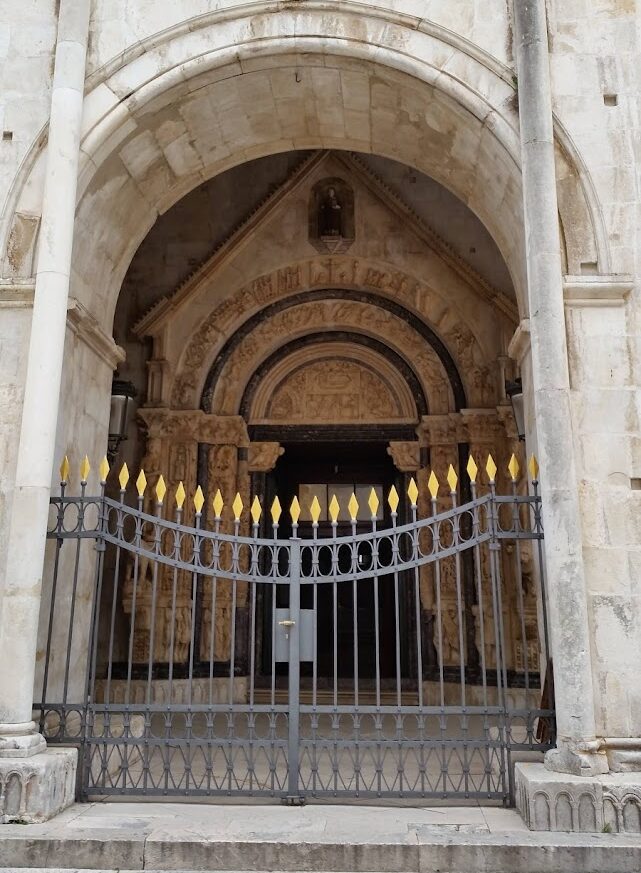
The cathedral’s Radovan Portal alone is considered one of the most monumental Romanesque-Gothic works in Croatia. The entrance is framed by a breathtaking Romanesque-Gothic masterpiece carved in 1240 by Master Radovan. It’s not just a doorway; it’s a stone tapestry of biblical scenes, mythical creatures, saints, and even Adam and Eve standing on lions. Every inch is packed with symbolism and storytelling, making it one of the finest sculptural works in all of Croatia.
In the heart of Trogir, where the Adriatic laps gently against golden limestone, stands a fortress that has watched centuries unfold—Kamerlengo. Built between 1420 and 1437, its walls rose in the wake of Venetian conquest, a strategic answer to a city bruised by siege and wary of its new rulers.
Master builder Marin Radoj shaped its stone under the guidance of military engineer Lorenzo Pincino, transforming the remnants of an older tower—the Tower of Chains—into a trapezoidal bastion of power. Within its walls lived the camerlengo, the Venetian governor, alongside mercenaries tasked with keeping order in a city that had once resisted them fiercely.
But Kamerlengo was more than a fortress. It was a stage for politics, a storehouse for oil, a chapel to St. Mark, and—according to legend—a place of heartbreak. The tale of the governor who loved a local girl named Zora, only to lose her and his daughter to fate, still lingers in the salt air, whispered by the wind that curls around the battlements.
Today, the fortress no longer guards against invaders. Instead, it opens its arms to music, theatre, and summer festivals. Its courtyard becomes a stage, its walls a backdrop for joy. And as the sun sets behind its towers, casting long shadows over the promenade, Kamerlengo reminds every traveler that history isn’t just preserved—it’s performed.
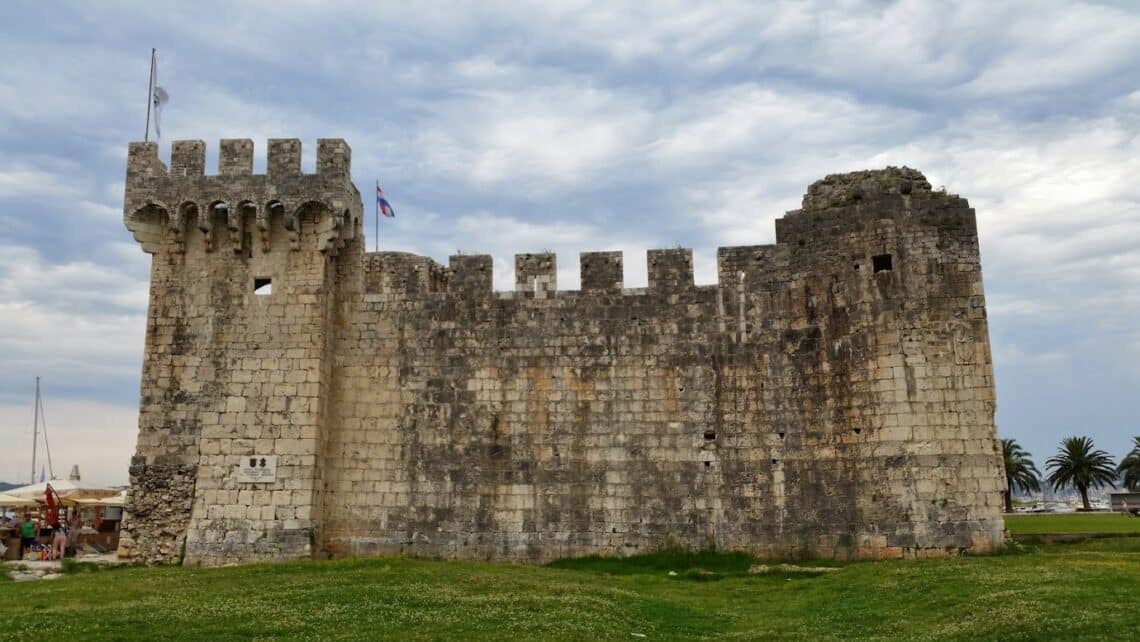
Saint Dominic Monastery is one of Trogir’s quiet treasures, nestled right along the waterfront promenade yet often overlooked. Despite its prime location, it blends so seamlessly into the row of cafés, kiosks, and palm-lined charm that many visitors stroll past without realizing they’re steps away from a 13th-century Gothic gem.
Its Venetian-style bell tower is visible from certain angles—especially from Kamerlengo Fortress—but unless you’re actively seeking it, the monastery’s entrance can feel tucked away, almost shy. That understated presence is part of its allure: it doesn’t shout for attention, it waits to be discovered.
And when you do step inside, the contrast is striking. The cloister offers a serene escape from the bustle of the promenade, with elegant arches and a quiet spiritual atmosphere that feels worlds apart from the boat kiosks and souvenir racks outside.
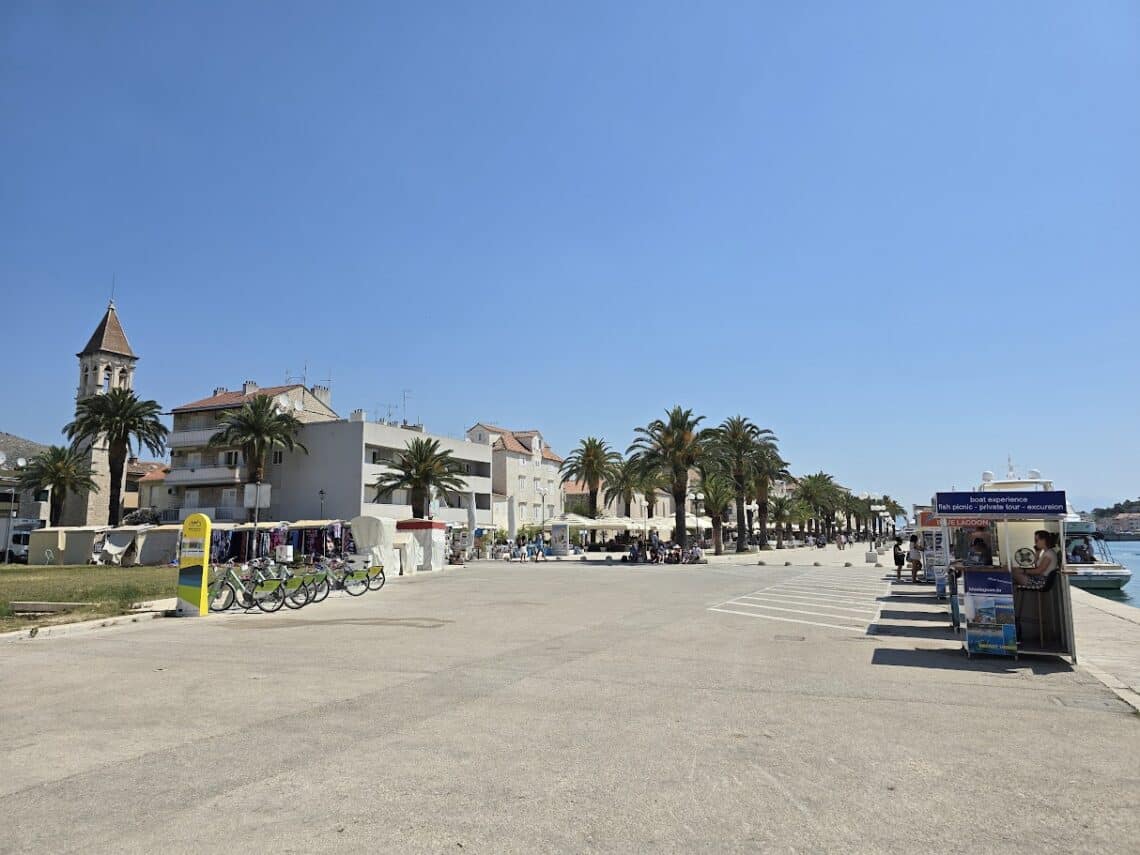


The airport serving Trogir is Split Airport, also known as Split Saint Jerome Airport (Croatian: Zračna luka Split). Split Airport is just about 5 to 6 kilometers from the main harbors in Trogir, making it one of the most convenient airport-to-marina transfers in Croatia.
🎒 Travel Tip(s):
Look for free cancellation options: Some hotels offer free cancellation up until a certain date. Booking accommodations with free cancellation can provide flexibility in case your plans change.
Check the map view: Booking.com has a map view feature that shows the location of hotels. This can help you identify accommodations in areas that are both desirable and affordable.
And just like that, Trogir reveals its layers—stone by stone, story by story. Whether you’re wandering the promenade, spotting hidden gems like Saint Dominic Monastery, or sailing out toward the Blue Lagoon, this town has a way of making you feel like you’ve stumbled into something timeless.
Which detail caught your eye? Drop a comment below—whether it’s a memory, a question, or a favorite spot you think others should know about. I’d love to hear what you discovered in Trogir.
By Arina JVR – Connecting across 30+ countries.
Before you share your story, please tap to show the vibe:
Share this:
Comments